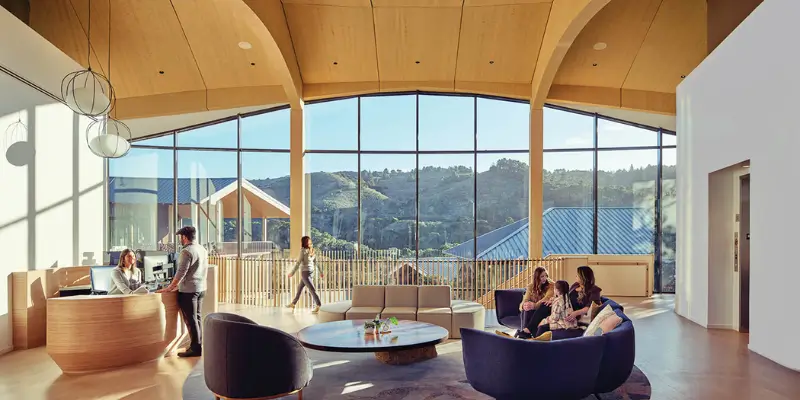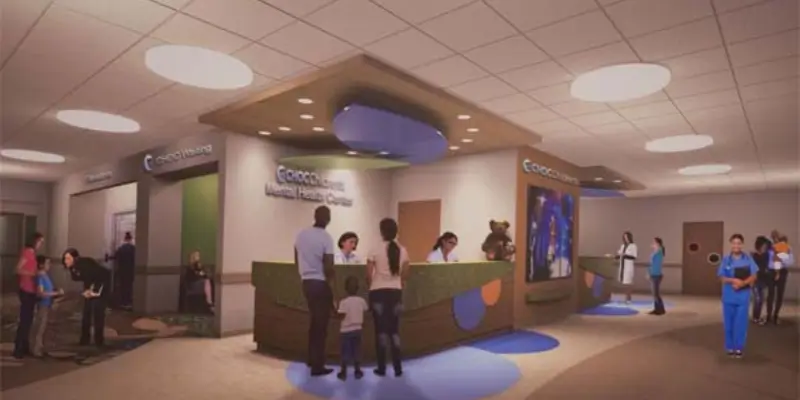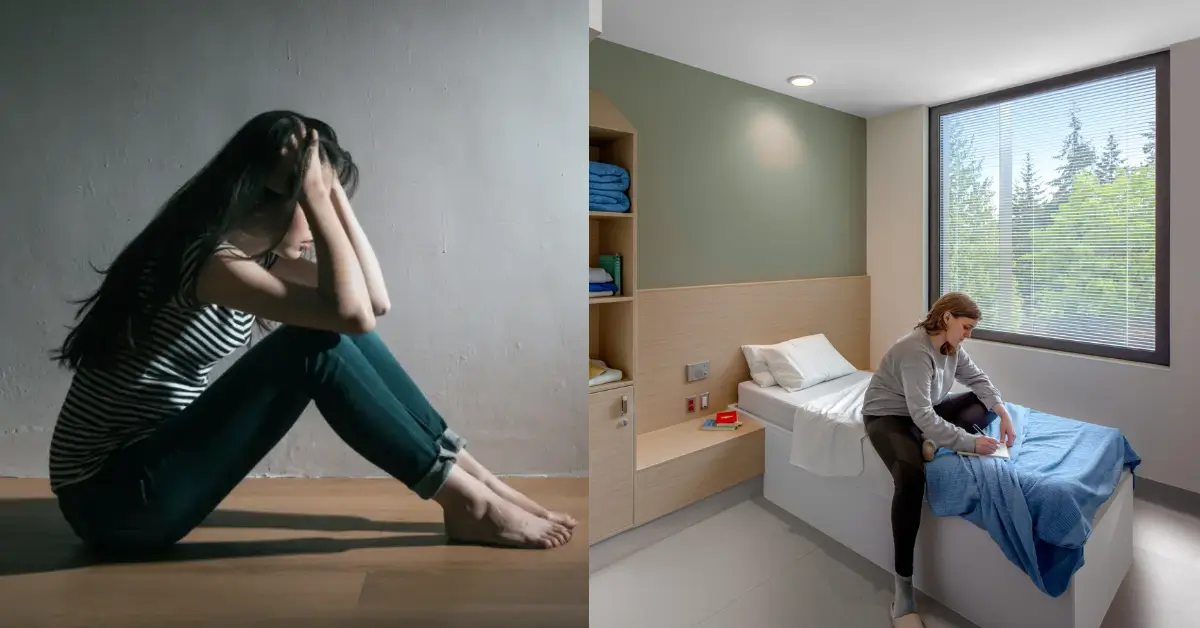Concept Health House Adolescents: Adolescents are not just young adults—they have unique physical, emotional, and psychological needs. Addressing these requires more than traditional healthcare facilities; it demands specialized spaces that provide comfort, privacy, and engagement.
Health houses for adolescents are purpose-built environments that integrate therapeutic design, community engagement, and holistic care. They aim to empower teens, support their mental health, and improve overall health outcomes.
By rethinking healthcare spaces, we can create environments that inspire trust, reduce stigma, and encourage adolescents to seek the help they need. Health houses go beyond medical treatment, addressing the social and emotional dimensions of adolescent health.
Concept Health House Adolescents
Health houses for adolescents represent a paradigm shift in healthcare. They are designed to cater specifically to the challenges and aspirations of young people, providing a safe and welcoming space for medical, psychological, and social care.
These centers focus on adolescent-centered care, ensuring that every aspect aligns with their developmental needs. Such facilities bridge the gap between clinical treatment and holistic well-being.
They offer services ranging from mental health counseling to health education, creating an environment that fosters growth, confidence, and community. By prioritizing adolescents’ voices, these health houses are more effective in addressing the unique challenges they face.

Community-Based Health Education Models for Teens
Community engagement is a cornerstone of adolescent health houses. Health education models tailored to teens involve interactive workshops, peer-led programs, and culturally relevant initiatives. These approaches encourage young people to learn, share, and take ownership of their health.
By integrating health education into community settings, adolescents gain access to resources that might otherwise remain out of reach. From mental health awareness campaigns to nutrition programs, these models empower teens to make informed decisions and connect with local support systems.
Read Also: AlbumBunkr
The Role of Design in Adolescent Health Spaces
The physical design of health houses matters. Adolescent health spaces must be welcoming, vibrant, and tailored to teens’ preferences. Features like open lounges, private counseling rooms, and creative activity areas create an inviting atmosphere that reduces anxiety and builds trust.
Design principles also prioritize accessibility and inclusivity. Whether it’s wheelchair-friendly spaces or gender-neutral bathrooms, these elements ensure every adolescent feels respected and valued. This approach not only enhances engagement but also improves health outcomes.
Responsive Architecture: A New Approach to Youth Well-Being
Responsive architecture adapts to the evolving needs of adolescents. This innovative approach considers their physical, emotional, and social well-being. Spaces that adjust lighting, acoustics, and temperature create an environment conducive to healing and relaxation.
These adaptive designs also promote interaction and community building. From flexible seating arrangements to multipurpose spaces, responsive architecture ensures health houses remain relevant and effective as teens’ needs change over time.
Therapeutic Centers: Bridging Design and Adolescent Mental Health
Mental health is a critical component of adolescent well-being, and therapeutic centers within health houses are designed with this in mind. These spaces combine comfort with functionality, offering areas for both individual and group therapy.
Features like natural lighting, calming colors, and sensory-friendly designs help reduce stress and create a supportive atmosphere. By integrating therapeutic design principles, these centers play a vital role in improving adolescent mental health outcomes.

Impact of Built Environments on Psychological Treatment for Adolescents
The environment in which psychological treatment occurs significantly influences its effectiveness. Health houses prioritize elements like soundproofing, comfortable furnishings, and privacy to enhance the therapy experience.
Natural elements, such as indoor plants or views of greenery, are also incorporated to promote relaxation and reduce anxiety. These thoughtful design choices ensure adolescents feel safe, respected, and open to receiving care.
Creating Youth-Friendly Health Facilities for Holistic Care
Youth-friendly health facilities recognize the importance of addressing adolescents’ physical, mental, and social needs. By offering integrated services under one roof, health houses make it easier for teens to access care without stigma.
These facilities also emphasize education and empowerment. Workshops on topics like mental health, reproductive health, and nutrition help adolescents take control of their well-being, fostering long-term positive habits.
Privacy and Comfort in Adolescent Healthcare Spaces
Privacy is paramount in adolescent healthcare. Health houses ensure confidential spaces where teens feel secure discussing sensitive topics. Private counseling rooms and discreet entrances are some of the features designed with this need in mind.
Comfort is equally important. Cozy furniture, warm lighting, and calming decor create a welcoming environment. These elements help reduce the fear often associated with healthcare visits, encouraging adolescents to seek the help they need.
The Importance of Nature and Art in Adolescent Therapeutic Design
Nature and art are powerful tools in therapeutic design. Incorporating greenery, natural light, and outdoor spaces in health houses can significantly enhance adolescents’ mood and reduce stress.
Similarly, art installations and creative spaces allow teens to express themselves and find comfort. These elements transform health houses into vibrant, healing environments that resonate with adolescents.
Involving Adolescents in Designing Their Healthcare Environments
Adolescents thrive when they feel heard and valued. Involving them in the design process ensures health houses meet their needs and preferences. Focus groups, surveys, and workshops can gather valuable input from teens.
This participatory approach fosters a sense of ownership and trust. When adolescents see their ideas reflected in their healthcare spaces, they are more likely to engage with and benefit from the services offered.
Linking Health Houses to Community Resources for Teens
Health houses serve as a bridge between adolescents and community resources. By collaborating with schools, local organizations, and family services, these facilities create a support network that extends beyond their walls.
This integration ensures holistic care, addressing not just medical needs but also social determinants of health. From career counseling to peer support groups, health houses empower teens to thrive in all aspects of life.
Future Trends in Adolescent Health Facility Design
The future of adolescent health facilities lies in innovation and adaptability. Virtual reality therapy, telemedicine, and AI-driven diagnostics are just a few advancements transforming health houses.
Sustainability is also a growing focus. Eco-friendly materials, energy-efficient designs, and biophilic elements ensure that health houses benefit both adolescents and the planet.
Challenges in Implementing Health Houses for Adolescents
Despite their benefits, health houses face challenges such as funding, staffing, and community acceptance. Securing resources and training professionals who understand adolescents’ unique needs are critical hurdles.
However, these challenges are opportunities for growth. By raising awareness and fostering collaboration among stakeholders, health houses can become an integral part of adolescent healthcare systems.

Benefits of Adolescent-Focused Healthcare Models
Adolescent-focused healthcare models offer numerous benefits, including improved health outcomes, enhanced mental well-being, and stronger community ties. By addressing the unique needs of teens, these models build a foundation for lifelong health.
They also reduce disparities in care. By making healthcare accessible, inclusive, and engaging, health houses ensure every adolescent has the opportunity to thrive.
Read Also: www nothing2hidenet
Final Thoughts
Health houses for adolescents are more than facilities—they are transformative spaces that nurture growth, healing, and empowerment. By integrating innovative design, holistic care, and community engagement, they redefine adolescent healthcare.
Investing in these spaces is an investment in the future. With the right support, health houses can help every adolescent reach their full potential.
FAQs
What are health houses for adolescents?
Health houses are specialized facilities designed to address adolescents’ unique healthcare needs, offering holistic care and supportive environments.
How do health houses improve mental health?
By integrating therapeutic design, private counseling spaces, and mental health programs, health houses create an environment conducive to healing and well-being.
Why is privacy important in adolescent healthcare?
Privacy encourages teens to seek help without fear of judgment, making it easier to address sensitive issues like mental health and reproductive care.
What role does community play in health houses?
Community involvement enhances health houses by linking them to local resources, fostering trust, and ensuring culturally relevant care.
Are health houses cost-effective?
While initial investments may be high, health houses can reduce long-term healthcare costs by preventing chronic issues and promoting early intervention.





